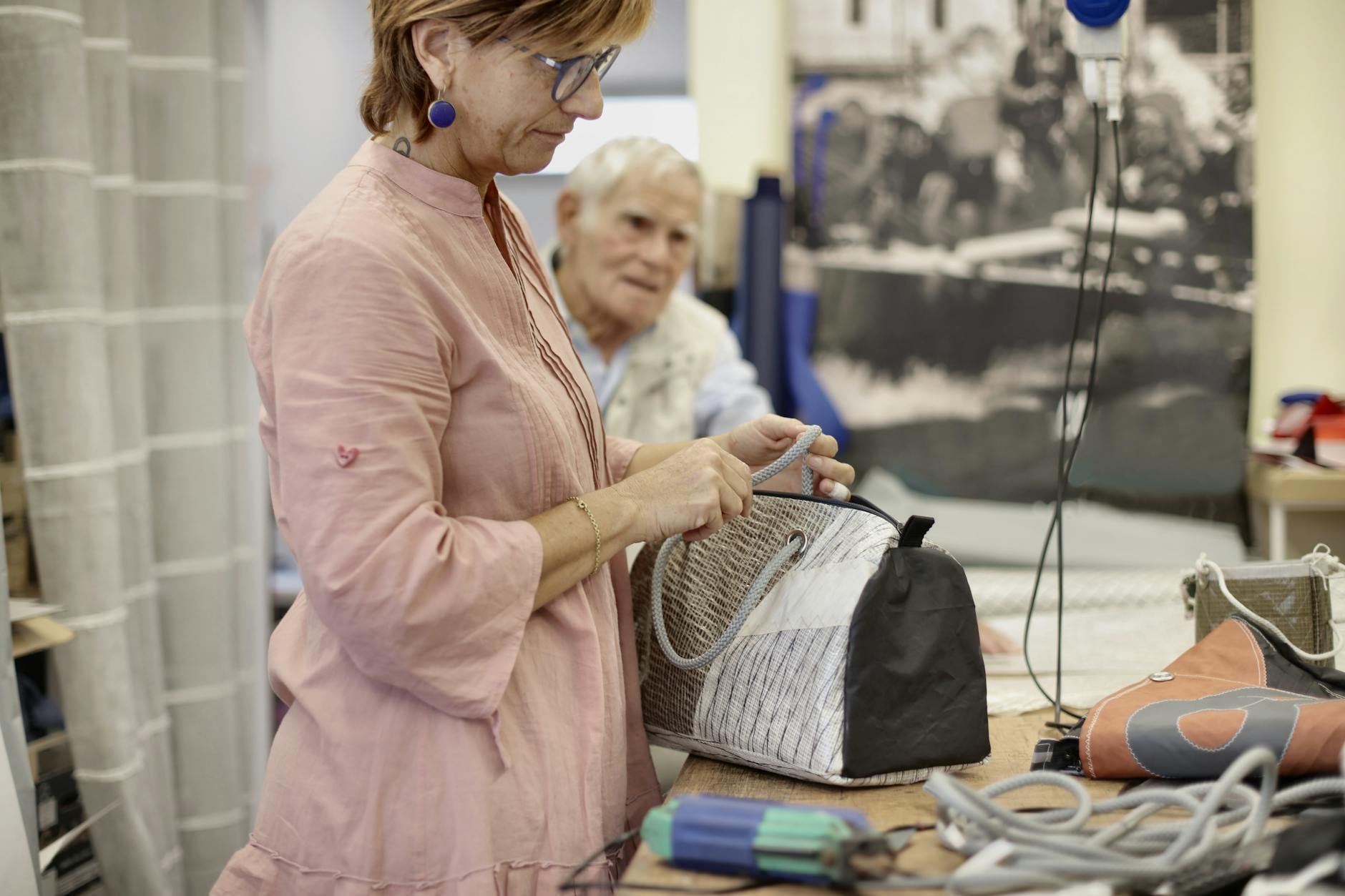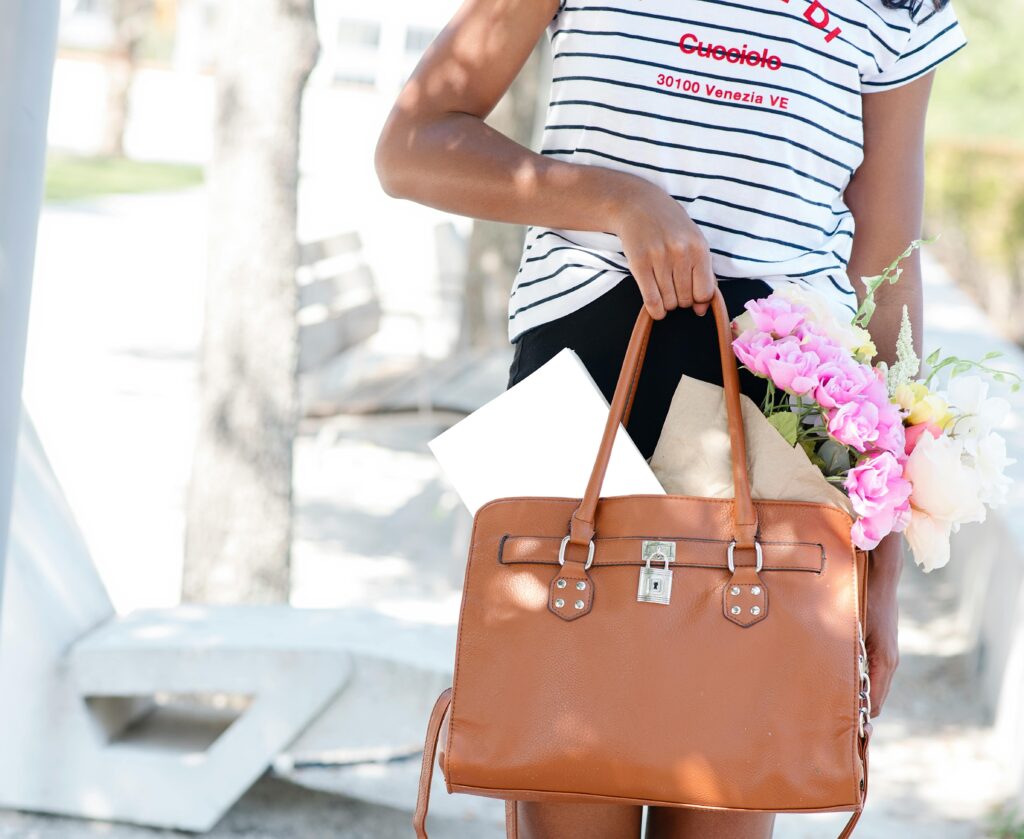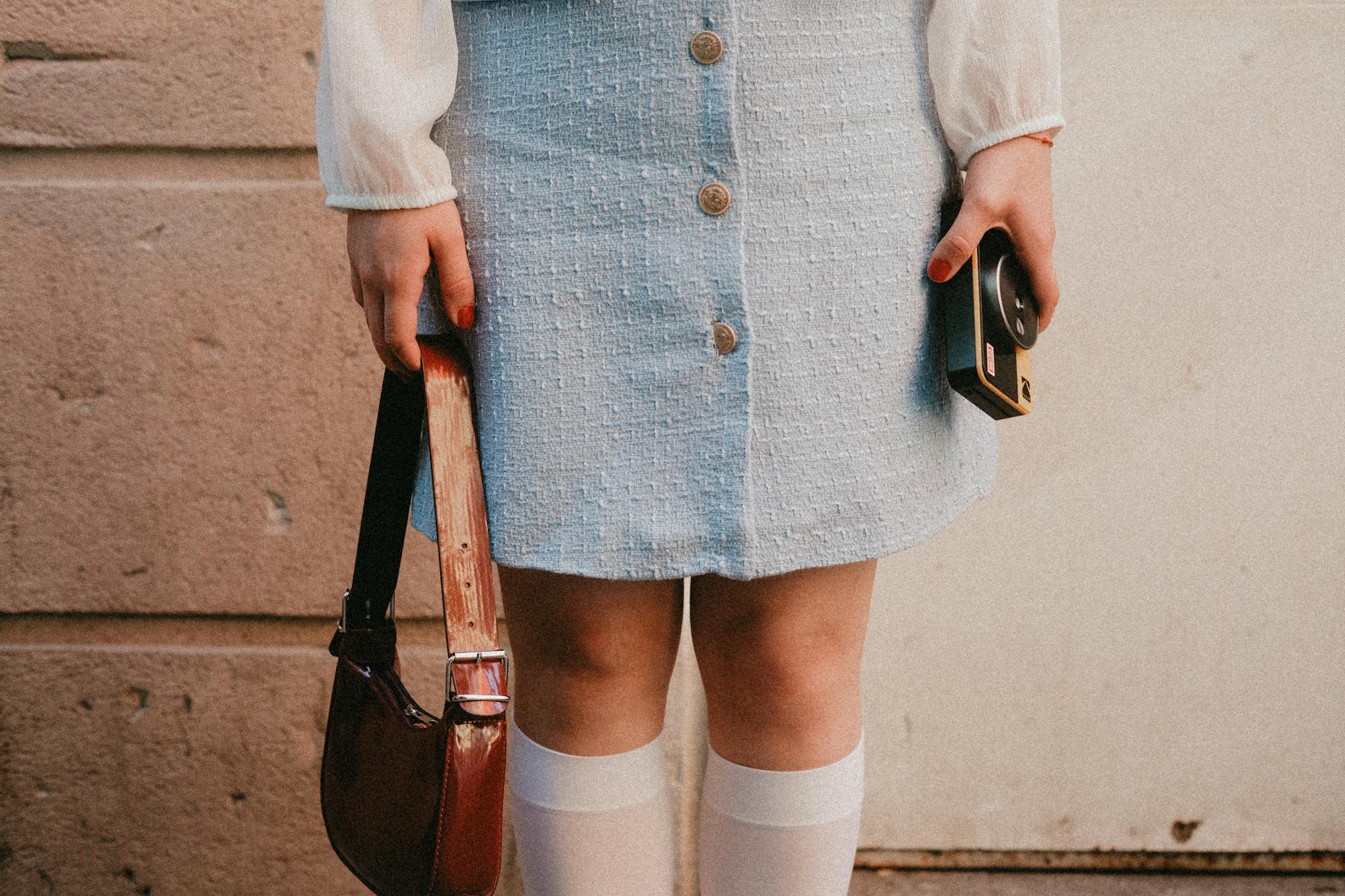Origins of Shoulder Bags
Let’s dig into the origins. Shoulder bags have a lineage that stretches back to ancient times when early humans slung pouches over a shoulder to keep tools or food within reach. Fast forward to the Victorian era, and women were sporting reticules, compact strap-bags meant for the necessities of daily life. Throughout the 19th century, those modest carriers gradually morphed into the structured shoulder bags we recognize now. Handbag history
[Experience Note] In our shop, we’ve observed that channeling the unpretentious style of the Victorian era for custom pieces helps keep them feather-light. Still, stay aware of the cloth’s weight, once it tops ten ounces, the material can start feeling unwieldy in a production run.
20th Century Milestones
Fast forward to the 20th century, when post-war practicality took hold. Women juggling work and everyday tasks craved hands-free bag options. Grace Kelly, a style icon, turned the shoulder bag into a must-have, and the one she carried ignited a fashion sensation. Sophia Loren added her splash of glamour by selecting pieces, further cementing the trend. Visual history of handbags
All trademarks are property of their respective owners. This article is informational and implies no affiliation or endorsement.
Designers began experimenting with materials such as leather and canvas. What started as a bag ten inches wide gradually swelled into more versatile totes—based on historical trends.
Modern Shoulder Bags and Customization
These days, shoulder bags for women manage to fuse utility with fashion. Adjustable straps—one to two inches wide—keep them comfortable. The material mix runs the gamut from cotton to synthetics.
In terms of risk, it’s wise to shun dyes that contain restricted substances. Our process adheres to REACH safety regulations. REACH standards Trademark issues also come into play—if a design mirrors a well-known style, securing the license beforehand is essential. Favoring unique patterns helps avoid any trade-dress disputes.
Decision Tree for Selecting Styles
Think of this as a decision tree for bag styles. First, sort out the purpose—everyday carry or a special occasion? For daily use, a cross-body shoulder bag with a 20-inch drop tends to hit the spot. For events, a clutch that can be slipped under a shoulder strap does the trick. As for size, a petite 8×6-inch model fits the simple mindset, while a generous 14×10-inch version caters to those needing more space. For material, canvas offers the durability required, typically weighing between 8 and 12 oz.
[Experience Note] In real runs, canvas proves robust but rub-fastness checks are still required. Some batches have dropped to a 4.0 rating when they weren’t pre-tested—so that factor should always be taken into account.
Key Historical Milestones
Key milestones have shaped the options we see today. The flapper era of the 1920s first slipped chain straps onto bags, daring the status quo. A couple of decades later, the 1950s leaned into silhouettes that felt almost architectural. By the time the 1970s rolled around, bohemian vibes burst onto the scene, complete with fringe. In the moment, the conversation revolves around sustainable fabrics, which now dominate the fashion narrative.

Customizing Shoulder Bags for Business
When a business decides to customize shoulder bags, the first thing to sort out is the MOQ and the overall workflow. Step 1: Share the vision—logo, color scheme, dimensions. Step 2: Within 48 hours, a set of mock-ups is sent over. Step 3: After approval, the first physical samples are turned around in one to two weeks. Step 4: Full-scale production then kicks off, complete with quality checks.
Lead times are dictated by the intricacy of the job. Straightforward prints? Four weeks. Embroidery? Tack on a week. From the outset, we lock in specs such as thread count—between 200 and 300—and seam strength.
If you’re eyeing clutches, they descend from the small cases of the 19th century. When practicality matters, shoulder bags take the lead for active women.
PU leather uses Our apparel line provides matching sets which you can choose from.
Women’s handbags aren’t just accessories; they carry a history as well. Since the Victorian era, they’ve signified independence, and today they’re frequently customized for team uniforms or handed out as promotional gifts.
Technical Specs
Alright, here’s the lowdown on the specs. Straps: they’re adjustable across a 30-to-50-inch range, letting the fit be fine-tuned. Weight: the design goal is to stay under 1 lb when empty, keeping fatigue minimal. Durability: reinforced stitching, proven in trials to hold up to 10 lb—consistent with industry norms.
Wrapping Up the Evolution
The history of handbags chronicles a shift from simple pouches to the fashion-forward pieces that dominate shelves today. Shoulder bags in particular align seamlessly with the whirlwind schedules many women navigate. For B2B clients, we’ve engineered a pipeline to request and receive custom-tailored versions.
leather vs synthetic Have a look at the way we customize gloves as well.
All told, getting a handle on this past helps pinpoint designs that never go out of style. Drop us a line to get your order rolling. We’re ready to advise, acting as the trusted partner your brand can lean on.
Checklist of Historical Features
| Era | Key Feature | Modern Custom Tip |
|---|---|---|
| Victorian | Reticules with straps | Opt for lightweight canvas under 10 oz |
| 1920s | Chain straps | Add adjustable drops for comfort |
| 1950s | Structured shapes | Use reinforced stitching for durability |
| 1970s | Fringe details | Incorporate sustainable fabrics |
FAQ
What is the history of shoulder bags?
Shoulder bags started as ancient pouches and evolved through Victorian reticules to modern functional designs in the 20th century. For custom options, consider low MOQ branding to match your needs.
When were shoulder bags first used by women?
Women began using early shoulder bags in the Victorian era for practical carrying, building on ancient slung pouches. Check material weights to ensure comfort in modern recreations.
Who popularized shoulder bags?
Icons like Grace Kelly and Sophia Loren helped popularize shoulder bags in the mid-20th century through fashion and film. Add sustainable fabrics for a contemporary twist.
What do shoulder bags represent in history?
They symbolize independence and practicality, shifting from decorative items to essential accessories for women’s daily lives. Use our decision tree to pick styles that fit your brand.
How have shoulder bags evolved for modern use?
From chain straps in the 1920s to sustainable materials today, they’ve become versatile for work and leisure. Test for color fastness like AATCC 61 in custom runs.





